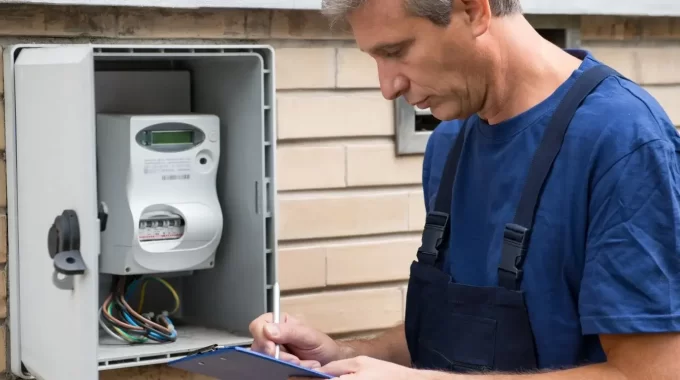
What are electricity meters used for?
What are electricity meters used for?
The electricity meters, otherwise known as the fuse box, is the heart of all the electrical installations you may have in your home. Thanks to the switchboard, the current can be sent to the various electricity consumers, such as sockets, switches, and lighting. It is also a sign of safety, as differential switches are installed to prevent the current from leaking out and going somewhere it shouldn’t in the event of faulty insulation. Obviously, if this is the case, the box could be live and could present a danger. You should also know what to do if your electricity meter breaks down.
The different elements of the electrical panel:
The main switch
The main switch stops all the electricity in your home. It is usually triggered when work needs to be done in the distribution box. The electricity meter is connected to the main switch. This is generally used as the main circuit breaker.
The differential switch
This protects the user against any loss of power in the installation by switching it off. The differential switch is also used as the main switch.
Automatic safety devices
These are safety devices that protect against short-circuits or overloads. A fuse consists of a strip or wire made of copper, silver or sometimes a copper alloy.
In the event of a short-circuit or overload, the wire melts. A fuse works well and is cheap, but once it has been used for too long, it needs to be changed.
Nowadays, we still use automatic switches or simply automatic dispensers. The automatic dispenser consists of:
— magnetic protection to protect against short circuits
— thermal protection that comes into action in the event of an overload
The big advantage of automatic dispensers is that they can simply be switched back on after an incident, because they work with a plate that folds instead of melting when the current is too high. All circuits in the vending machine cabinet must be protected with a circuit breaker or fuse.
Protection against overvoltage
A voltage surge is a short impulsive rising voltage spike. A voltage spike that is too high is detrimental to the installation and the connected equipment. Generally, IT equipment or audio and video installations require additional safety. A voltage surge can occur as a result of a lightning strike, network pollution, etc. Installing surge protection is not necessarily compulsory, but it is recommended.
Depending on your installation, other components may be present in the fuse box. For example, transformers to convert 230 volts to a lower voltage (8V, 12V, 24V). A transformer can also be used to operate a central control system, such as a home automation system.
Electrical circuits
An electrical circuit mostly starts at the vending machine and supplies a number of light points and sockets. A limited number of sockets/multi-sockets can be installed per circuit. If “heavier” appliances are placed in the same room, then there will need to be different circuits.
Switches, buttons, sensors and push-buttons
In addition to traditional switches, motion sensors or other devices can be installed. This is not compulsory, but it is more environmentally friendly.
Need an Emergency Electrician Basingstoke to install an electricity meters? Call us.
We collaborate with: Emergency Plumber Wolverhampton, Emergency Plumber Preston, Emergency Electrician Derby and Emergency Locksmith 24h.

